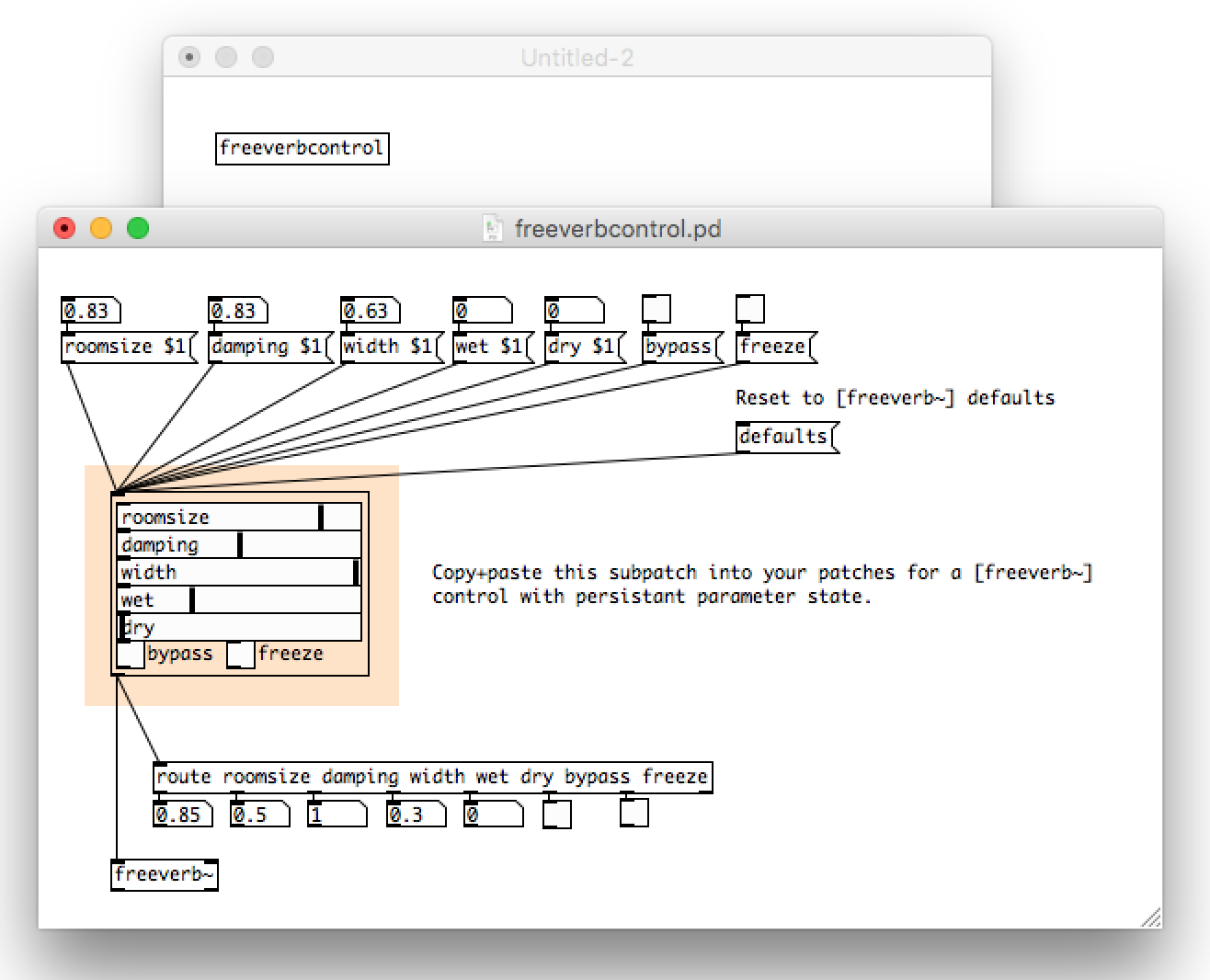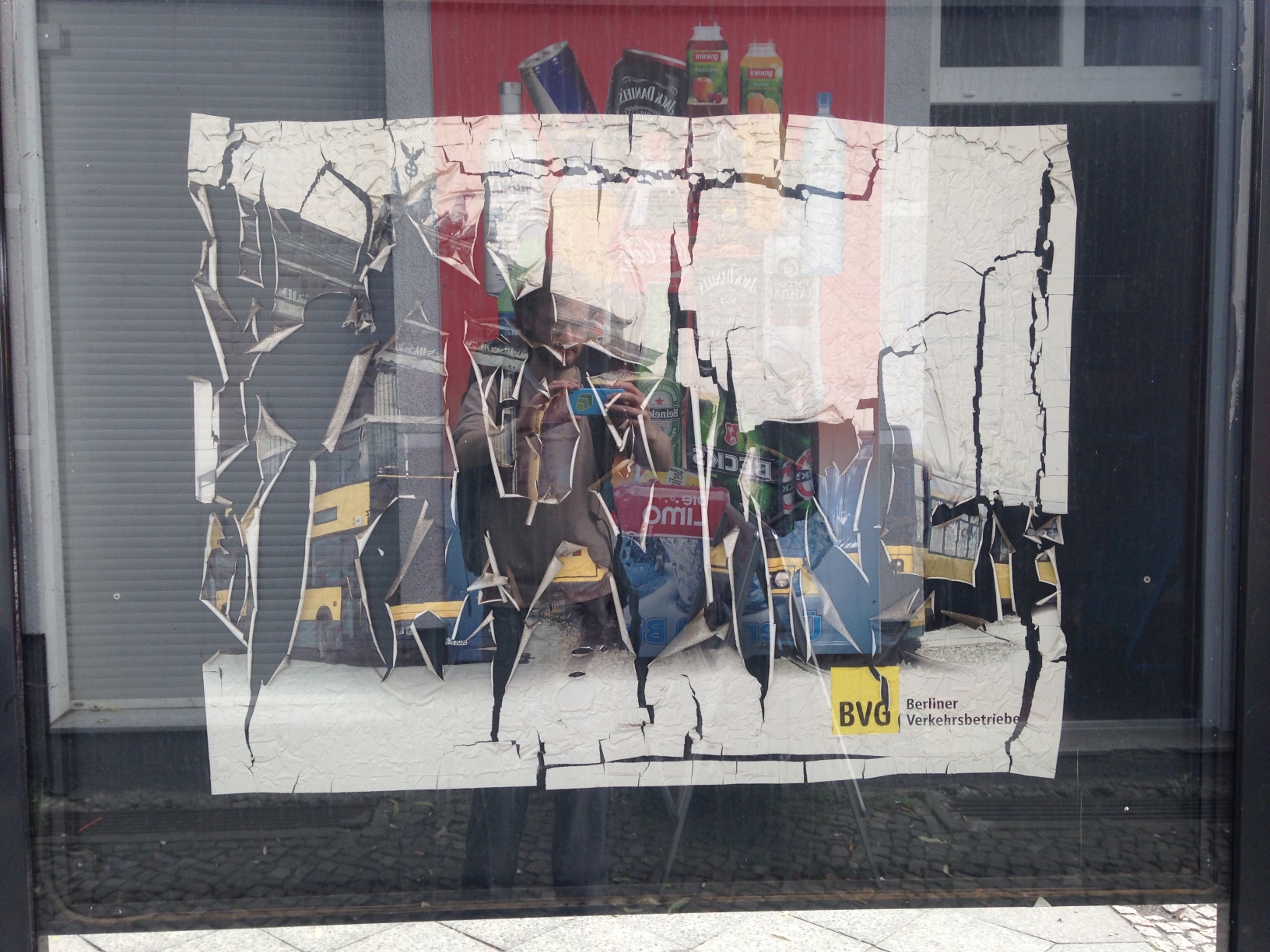@dymaxion cool! Also a great way to see taxicab geometry in action (e.g. walking for 30 minutes in Salt Lake City). I tried making a similar project a few years ago to visualise how cities distort space-time, not as polished or useful as this one but showed individual tracks which is nice.
Seeing a lot of people talking about Germany in response to #Cville. Unfortunately, DE has it’s own problems with rising “alt” far-right. Saw this in town today:

It’s an election poster for the AfD (“Alternative for Germany”). Roughly translated it says “Burkas? We like Bikinis. Trust yourself, Germany!”. They’re growing in popularity, especially in places like this town, historically with strong (10%) NPD (Nazi) voting base. Their posters are either bullshit like this, or cleverly framed statements about borders, pensions, schools, children, “taking back control” etc.
Video: OWLS WITH TENTACLES
A tune of mine from when I lived in Iceland a few years ago, recorded with Emilyn and John in Toronto, Canada on 2017-05-12.
Barnaby Walters: Hurdy Gurdy
Emilyn Stam: 5 String Fiddle
John David Williams: Accordion
#TIL every year since 2000, the German Arachnid Society has voted a “Spider of the Year” https://de.wikipedia.org/wiki/Spinne_des_Jahres
This year’s spider is the Walnut Orb-weaver
@w03_ @rvkgrapevine burning poo? Ugh what a waste. Perhaps Iceland would benefit from setting up periodic composting toilets by the road for people to poo in, and then giving/selling the compost to Icelandic farmers? I’m sure they could even come up with some silly branding for it.
@w03_ I’m surprised people get so annoyed about pooing in the wild in Iceland, the landscape is so devoid of humus it could benefit from some good healthy biomass, no?
Video: Trip to the Mill / Wicker Basket Schottishe
https://www.youtube.com/watch?v=hGbZvzddnmk
Two lovely new tunes by John, played by Emilyn, John and myself in Toronto, Canada, 2017-05-12.
Barnaby Walters: Hurdy Gurdy
Emilyn Stam: 5 String Fiddle
John David Williams: Accordion
@ztsamudzi although honestly I have no idea in what sort of religious context this dance culture fitted into, I will have to read up on that and try to learn more.
@ztsamudzi there are various pan-european dances found all over the continent, e.g. polka, schottish, waltz, mazur/mazurek/mazurka, polska, slängpolska/polonaise/ländler/steyrer/wickler (modern term), minuet, quadrille, etc. Each dance form typically retains the same basic step everywhere but has regional variants, or is related to dances from different areas, as the dances and music travelled along trade routes. Many fascinating examples exist of tunes or dances which are found in parallel sources in many different areas, which is a nice way of getting rid of nationalists who try to appropriate this stuff for nationalism. A lot of these dances made their way over to America too, and in a lot of cases (IIRC) mixed with black dance+music culture and became the basis for a lot of n. american traditional dances.
Most of these were danced a lot in Europe over the past 300 years but then more or less died out in the 19th century (as the style of music changed and Europe started to import and appropriate e.g. latin dances), before being rediscovered as part of the various folk revivals in the 70s. Now they’re danced casually as “balfolk” or “eurodance”. Not widespread in the mainstream, but not totally obscure either (e.g. google “balfolk”) with widespread events and a more and more progressive pedagogy.
Video: The Poisonous Polonaise (Polonoise No. 19, Wittenberger Apothekenhandschrift, Deutschland)
More music from Emilyn, John and me!
This one is a beautiful polonaise found in the Wittenberger Apothekenhandschrift, a hand written dance manuscript found in the Giftschrank (poisonous substance cabinet) in an old pharmacy in Wittenberge, Germany.
Sheet music for this piece, and many other amazing northern German traditional music, can be found in volumes 1-3 of Neues aus Alten Büchern (new things from old books) published by Tramudea e.V., and also on tanzmusikarchiv.de and the TradTanzMusik youtube channel.
Recorded in Toronto, Canada on 2017-05-12
Barnaby Walters: Hurdy Gurdy https://gurdy.is
Emilyn Stam: 5 String Fiddle
John David Williams: Accordion
Finally figured out how to format a memory stick for optimal compromise between compatibility and file sizes.
The goal is to be able to stick this memory stick in anything from the last 15 years and be able to load files on and off. The implementation idea was to have two partitions, one FAT32 for compatibility with everything, and one ExFAT for wide compatibility allowing larger files.
The mistake I made last time was using a GUID-based partition map, which rules out compatibility with older hardware which uses a BIOS. This can be rectified by using the older Master Boot Record partition map, which has some restrictions, but nothing particularly relevant in this case.
I had no end of problems trying to achieve this with the Gnome Disks tool and GParted, and on Mac OS 10.11 it’s not possible in the Disk Utility GUI. It is, however, very easy using the command line Disk Utility tools.
Firstly, run
diskutil list
to find out the descriptor for the device you want to format (e.g. /dev/disk2, referred to in future examples as /dev/diskX), then
diskutil unmountDisk /dev/diskX
to unmount it in preparating for formatting. I’m formatting a 64GB flash drive with 62.1GB actual capacity into two equal portions, so my command ends up looking like this:
diskutil partitionDisk /dev/diskX MBR ExFAT NAME_OF_FIRST_PARTITION 31.1g FAT32 NAME_OF_SECOND_PARTITION 0g
where the format is pretty self explanatory:
volume partition_map partition_1_format partition_1_name partition_1_size partition_2_format partition_2_name partition_2_size
The size of partition two is given as 0g, which results in the rest of the available space being taken.
A list of available filesystems for formatting can be browsed with:
diskutil listFilesystems
I just tested the newly formatted universal memory stick with a computer with which it previously didn’t work, and it worked perfectly, so I’m confident that this approach achieves my original goal.
Video: Lights in the Sky (Barnaby Walters)
Finally the first video from my trip to Canada last month! Playing with Emilyn and John is always a blast, and this time we recorded a bunch of tunes. More to come!
https://www.youtube.com/watch?v=dhxygxmaiSE
A waltz I wrote whilst living in Iceland, recorded for the first time with Emilyn Stam and John David Williams on 2017-05-12 in Toronto, Canada.
- Barnaby Walters: Hurdy Gurdy
- Emilyn Stam: 5 String Fiddle
- John David Williams: Clarinet
Just a few more days now until Vaka 2017 in Akureyri! I’ll be there the whole week, and will be teaching some tunes and dances with Wilma and Benjamin on Thursday. There are still tickets available!
#pd [freeverbcontrol] — I tried to make a little pd GUI abstraction for [freeverb~], but couldn’t find a simple (or even complicated) way of storing parameters which are unique per instance of the abstraction.
The approach I eventually came with up is simple, if a little cludgier than I’d like: provide a template patch with the actual GUI as a subpatch, which must be copied/pasted into the patch you actually want to use it in.
Download: freeverbcontrolpd.zip

@rknLA @free_bear_rides impuse response sample as in for conv. reverb? Not sure what you mean, the hurdy gurdy isn’t a space you can sample (…is it?) Such a recording almost certainly doesn’t exist already, but I might be able to make you one if I know exactly what it is you need…
 Eleanor Saitta
Eleanor Saitta Adam Chalmers
Adam Chalmers

 Danny Hope
Danny Hope (╯°□°)╯︵ ┻━┻
(╯°□°)╯︵ ┻━┻ Zoé Samudzi
Zoé Samudzi
 rknDE
rknDE